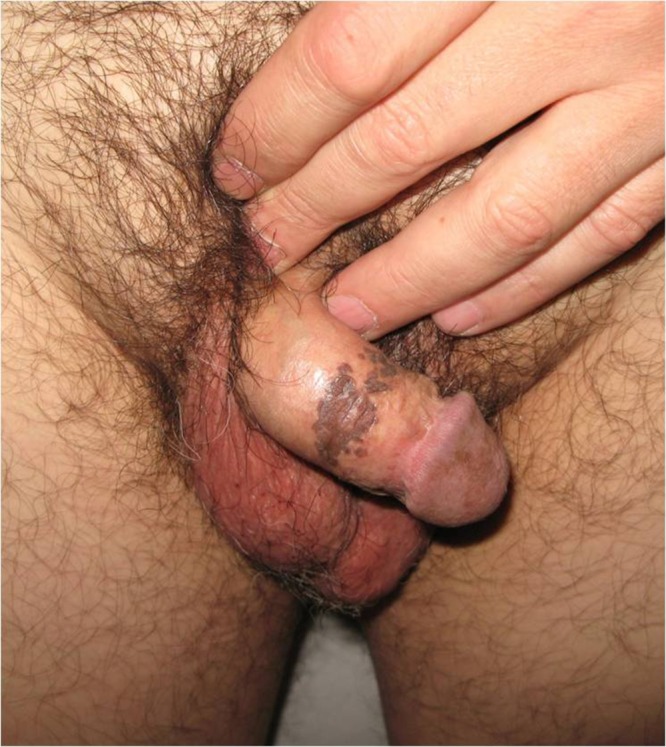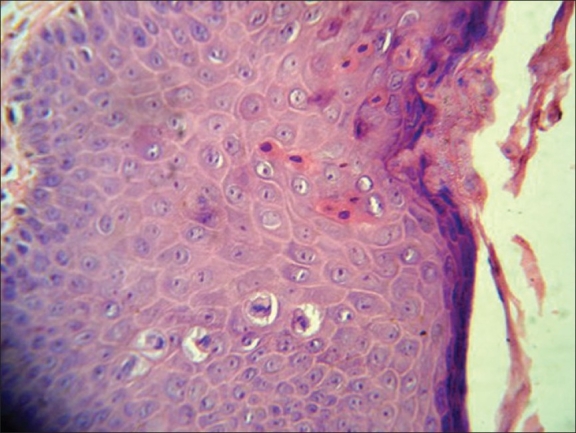Bowenoid papulosis is a sexually transmitted condition induced by HPV HPV Human papillomavirus (HPV) is a nonenveloped, circular, double-stranded DNA virus belonging to the Papillomaviridae family. Humans are the only reservoir, and transmission occurs through close skin-to-skin or sexual contact. Human papillomaviruses infect basal epithelial cells and can affect cell-regulatory proteins to result in cell proliferation. Papillomavirus (HPV) infection, which facilitates keratinocyte Keratinocyte Epidermal cells which synthesize keratin and undergo characteristic changes as they move upward from the basal layers of the epidermis to the cornified (horny) layer of the skin. Successive stages of differentiation of the keratinocytes forming the epidermal layers are basal cell, spinous or prickle cell, and the granular cell. Erythema Multiforme neoplastic transformation Transformation Change brought about to an organism's genetic composition by unidirectional transfer (transfection; transduction, genetic; conjugation, genetic, etc.) and incorporation of foreign DNA into prokaryotic or eukaryotic cells by recombination of part or all of that DNA into the cell's genome. Bacteriology. On skin biopsy Skin Biopsy Secondary Skin Lesions, Bowenoid papulosis manifests as low-grade dysplasia. Affected individuals present with genital papules of a red-to-brown color that are often asymptomatic. Although most cases resolve spontaneously, lesions should be followed up because there is a risk of transformation Transformation Change brought about to an organism's genetic composition by unidirectional transfer (transfection; transduction, genetic; conjugation, genetic, etc.) and incorporation of foreign DNA into prokaryotic or eukaryotic cells by recombination of part or all of that DNA into the cell's genome. Bacteriology to invasive squamous cell carcinoma Squamous cell carcinoma Cutaneous squamous cell carcinoma (cSCC) is caused by malignant proliferation of atypical keratinocytes. This condition is the 2nd most common skin malignancy and usually affects sun-exposed areas of fair-skinned patients. The cancer presents as a firm, erythematous, keratotic plaque or papule. Squamous Cell Carcinoma (SCC) (SCC). Cryosurgery, excision, or topical therapy may be used to hasten the resolution of persistent cases of Bowenoid papulosis.
Last updated: Feb 25, 2025
| Number and morphology | Multiple papules |
|---|---|
| Color | Red-brown to violaceous |
| Surface |
|
| Size | < 1 cm |
| Distribution |
|
| Location |
|
| Symptoms |
|

Penile shaft Bowenoid papulosis (small gray-brown papules)
Image: “Figure 1” by Carolina Marcucci et al. License: Public Domain
Bowenoid papulosis
Skin biopsy showing epidermal dysplasia